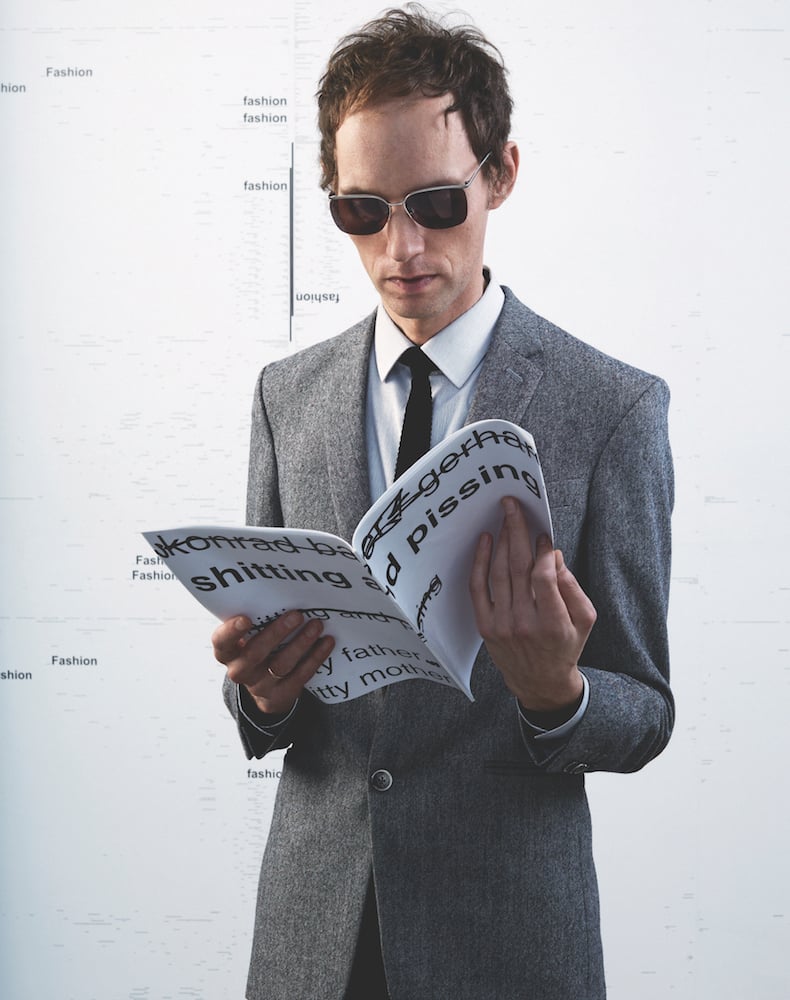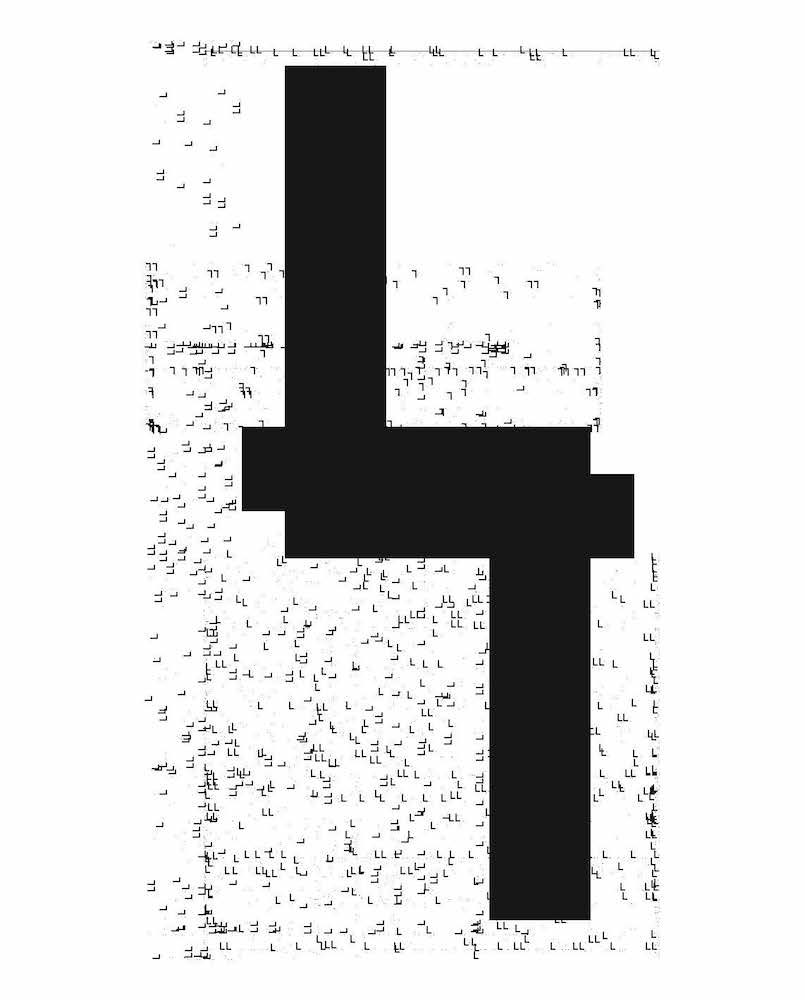Art World
Michael Riedel Made an Artwork Out of Art Cologne’s Selection Process
He recorded the selection committee's meeting to produce the site-specific work.

He recorded the selection committee's meeting to produce the site-specific work.

Perwana Nazif

German artist Michael Riedel has been commissioned to create an artwork for the Art Cologne fair this year. For his installation, titled “L”—which will be installed in the fair’s large entrance hall—Riedel asked to record the meeting of the fair’s advisory board in which galleries were accepted or rejected from the fair.
The three-hour recording of the meeting culminated in a 29-page document where the letter L occurred 1,894 times out of a total of 53,689 characters.

Michael Riedel, Ohne Titel (L-Serie), (2017). Courtesy of the artist.
Riedel’s practice often consists of recording conversations about the art world specific to social and economic arenas. When describing Riedel’s works, the prefix “re-” proves especially useful: re-staging, recycling, recreating. His techniques of repetition and replication invert connotations and meanings in such a way that offers commentary on the work itself and its contextual surroundings.
In an exclusive interview with the artist, artnet News acquired more details about Riedel’s upcoming installation, and the behind-the-scenes of its making:
Much of your work deals with meta discussions relating to the art world—here, “L” presents a recorded conversation about the very place it is installed in. To what extent is this reflective of your conceptual practice?
Translation and transmission of the art system‘s communication is the defining approach of my work. The material I use is already in existence at the time of its intervention: Exhibitions that took place in my surroundings, texts written about me on the web, conversations by bar-goers, film screenings, and club events which I have attended. Using self-reflecting loops of reproduction techniques, I transform the material into images. It is a method which automatically generates new works, meaning that after an initial decision, works are created that follow controlled chances, reconstruct and restructure existing ones, obey an inner logic, and form new surfaces without any further artistic decisions.
One could also explain it with the Gemini spell: In this magic spell, objects multiply at the slightest touch, and the multiplications in turn continue to multiply. In short, my works are witnesses to a temporally continuing process within the art system.
How were you able to record meetings of Art Cologne’s advisory board?
At the very moment Art Cologne invited me to realize a work for their entrance area, they agreed to open their internal communication system for me. Otherwise, it wouldn’t make any sense to request a work from me because part of my practice is the breaking of taboos, such as the repeal of authorship, the appropriation of material created by others, and also the participation in closed meetings excluded from public view. For an exhibition at Portikus in Frankfurt, for example, I published the catalogue Quasi Portikus (False Frieze Art Fair Catalog) from the Frieze Art Fair London in 2004. I reproduced the official PDF files of the fair with the printing dates for its catalogue in black and white, and included my own images and texts.
Is “L” a site-specific installation? Can it be shown elsewhere and if so, does this change the work?
The specific “L”-loop is absolutely site-specific. It is an installation for a fair whose surface is designed with a graphic pattern generated from a transcription of a three-hour meeting of the fair’s selection committee. The “L”-text, which originated from the transcription, tells of assurances and rejections, of the relevance of art works and galleries, of being included or being excluded. It is the “source code” of the fair, that which underlies it but doesn‘t come into the open.
With digital work processes, I’ve created a complex graphic pattern from the text which visualizes both realized and unrealized possibilities in abstract form. The entire potential is now presented at the entrance to the site, which, after passing through, serves as a stage for the realized possibilities.
What is it about the letter “L”, specifically, that is so pertinent to this work?
I made the decision for “L”, because for me it is a neutral letter and not loaded with any meaning. In the 29-page text with its total of 53,689 characters, the letter L appears 1,894 times, and thus it can take over all of the decisions of the image formation. By emphasizing and enlarging this letter, an automatism gets under way, which defines both the composition of the entire text and the L-shape of the spatial installation. On a large floor space and on the L-shaped booth unfolding from it, I transform the communication extracted from the art system into floor coverings, wallpapers, and images—all backgrounds which are intended to draw less attention to themselves as works of art, and rather draw attention to the conditions of their production as self-circulating post-production.
Your work is very self-aware, particularly of its immediate environment. Can you go into this further?
At first glance, my self-referential and systemically inherent practice can appear as if it only ironically mirrors itself and the art world, because the art is a direct response to events and to the material produced by them. For me, however, this includes in its radicality an attitude that can become a manifestation of resistance far beyond the boundaries of art. In contrast to many cultural efforts, I am interested in a relaxation, a natural state, which is expressed in the creation of arbitrary versions, which should merely produce a difference to the template, and whose forms emerge preferably by themselves. In my preface “Re-entry” for the publication Oskar, I described this approach as the zero point of creativity. Consequently, I seize upon events in my immediate surroundings to minimize my own actions.
For my first exhibition at David Zwirner, entitled “Neo”, I picked an exhibition by Neo Rauch that was shown in the gallery a few months before my own show while I visited the space. I have, for example, alphabetically rearranged a text about Neo Rauch with the title “Painters, Germans, and other Renegades.” The text is now called “And Germans, Other Painters, Renegades.” The new title describes precisely what I am doing: I, too, am a German painter, just different.
Can you address the running themes of spectatorship and technology (such as voice recordings) in your work?
Audio recordings are one of many ways to generate material from events, which I can feed into additional production processes. They are transmission processes and technology is a tool for that. By using uncut recording of conversations in a bar or in art fair meetings, I remove the distinction between relevant and irrelevant information, everything is preserved in its complexity.
With the further advancement of communication capabilities and information transfer in the art business, there will always be new potential for my working method. For the series PowerPoint Paintings I documented with screenshots the automatically generated transitions from one slide to the next generated by the “random” setting for the presentation program. I’m interested in the interstitial space, in the transition, which is produced as well and thus offers a further space for the processing of forms. Eventually, technology allows infinite transformations. It is like the “telephone game,” only I’m not just interested in the end result—not just version B of version A—but the possibilities for versions C, D, E, F, G, and H.
The 51 edition of Art Cologne is open to the public from April 26-29, 2017